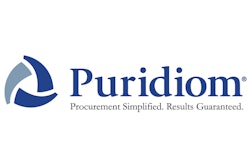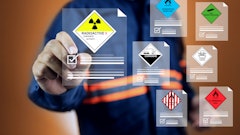By Al Jacobs
Back in the 1980s and into the 1990s, e-procurement was something of a novelty. Companies viewed procurement solutions as tactical tools, typically for automating some portion of the requisition-to-purchase order process. The solutions were expected to quietly return moderate savings over time.
Today, by contrast, leading organizations see e-procurement as a necessity to automate the "end-to-end" procure-to-pay process, to track and capture their organization's entire spend, and to return significant hard-dollar savings to the bottom line. Chief procurement officers are coming to rely on e-procurement solutions to meet strategic corporate initiatives, such as corporate social responsibility and compliance mandates. They also want to use procurement tools to automate tactical operations and free up time for themselves and their staffs to focus on more strategic, higher-impact activities. This is the era of e-Procurement 2.0.
The business case for moving to e-Procurement 2.0 is compelling. Research from analyst firm Aberdeen Group has shown that organizations implementing procurement applications, on average, see spend under management increase from 40 percent to 55 percent, req-to-order costs drop by nearly half, req-to-order cycles cut by nearly 75 percent, and percentage of maverick (off-contract) spend reduced from 40 percent to 25 percent. These sorts of results are driving more and more organizations to adopt procurement solutions. But before they do, it is vital that they assess their "e-procurement competence" to ensure that they are truly positioned to get the most out of their procurement technology investments.
How can you assess your own e-procurement competence? From a process standpoint, research from Aberdeen has shown that laggard organizations lack formal procurement processes and have no visibility into their processes. Best practices, if they exist at such organizations at all, are an anomaly, not the norm. Moving up the maturity scale, industry average organizations have some standardized processes and some visibility into their processes. At the top of the performance scale, best-in-class organizations standardize their procurement processes across the enterprise, actively manage process compliance and map uniform processes to their procurement technology platform. In other words, leading procurement organizations use technology to guide end users along a process pathway that ends with compliant purchases. But the standardized process must be in place to begin with, or no technology will help.
Purchasing functions must make similar assessments of their organizational, knowledge and technology competence around e-procurement. Looking at the organization, based on Aberdeen's research, laggards exhibit no clear program ownership or sponsorship of their e-procurement initiatives, and they do not employ "power user" programs, while best-in-class organizations have a clearly identified champion and engage with highly visible power users. With regard to knowledge competence, laggards show little ability to scale knowledge across the enterprise, while best-in-class organizations emphasize end-user training and support, and they are willing to look outside their organizations to acquire new skill sets and knowledge.
Finally, on the technology side, laggards tend to view an e-procurement system as an end in and of itself. At best they implement limited integration with other supply management technologies, and they typically have little in the way of plans for expanding their e-procurement footprint. Leaders, on the other hand, see an e-procurement system as a foundation upon which to build and aggressively invest in new capabilities to fill functionality gaps. These more advanced organizations pursue integration with supplier networks, as well as supplier enablement and other services as necessary to add to the value they achieve through e-procurement.
The bottom line is that e-Procurement 2.0 offers the promise of achieving significant, sustainable savings over time. But your organization must have the structures and processes in place to take advantage of the capabilities that the newest e-procurement solutions offer. You must be willing to honestly assess your competence levels and then put in place a strategy to improve upon weak areas — and only then move forward with deploying the kind of advanced e-procurement solution that will take your spend management from 1.0 to 2.0.
About the Author: Al Jacobs is a vice president at Puridiom, a Mechanicsburg, Pa.-based provider of e-procurement solutions. He can be reached at 800-388-1415 x 103 or [email protected].



















